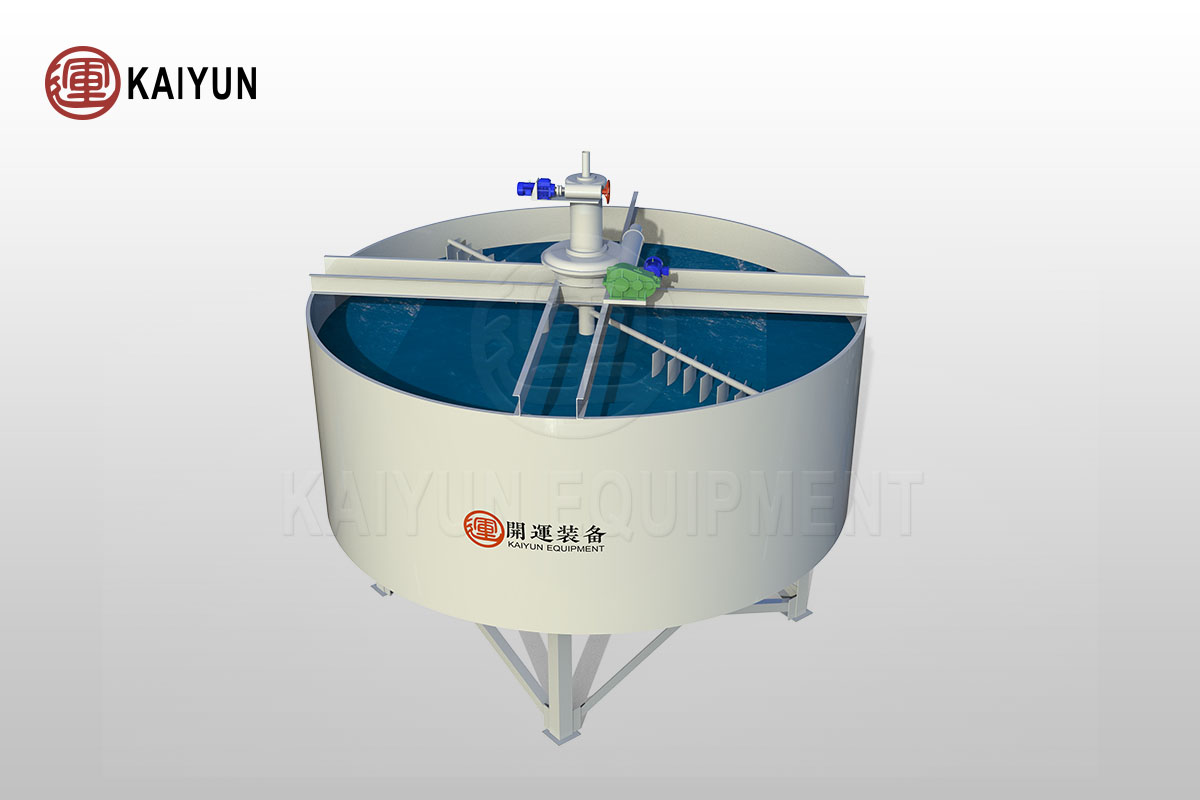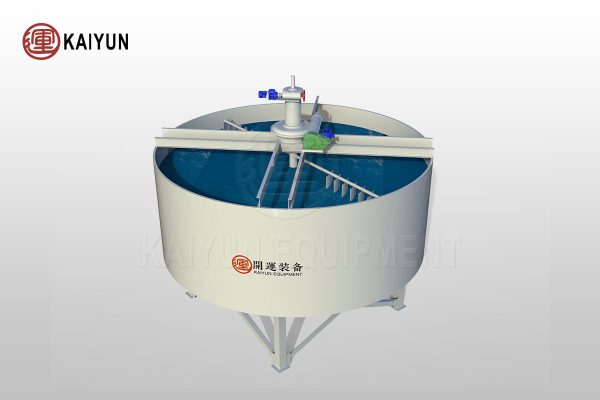Product Introduction
The High-Efficiency Thickener, featuring a newly designed mechanical structure, enhances thickening efficiency through improved flocculant action on solid particles.
The High-Efficiency Thickener can be equipped with a flocculant addition system, making it widely applicable across industries such as metallurgy, mining, chemical engineering, construction materials, and environmental protection.
The High-Efficiency Thickener is highly effective for processing mineral slurries, wastewater, and waste residues, significantly contributing to increased water recovery rates, higher underflow concentrations, and environmental protection.
Table of Contents

Advantages and Features
Flocculation Enhancement and Accelerated Sedimentation
The addition of flocculants increases the particle size of settling solids, significantly accelerating the sedimentation rate and enhancing thickening efficiency.
Degassing Design and Particle Separation
The integrated degassing chamber effectively prevents solid particles from attaching to bubbles, ensuring stable particle sedimentation.
Uniform Feeding and Anti-Flotation
Equipped with a feed plate and downward sloping feed tube, the thickener ensures even and smooth slurry flow, effectively preventing flotation issues and maintaining stability and efficiency in the thickening process.
High Processing Capacity and Low Energy Consumption
Compared to traditional equipment, the High-Efficiency Thickener offers superior unit processing capacity and lower energy consumption, showcasing its outstanding performance advantages.
Intelligent Control
Equipped with an automated control system, the High-Efficiency Thickener provides smart operation, enhancing precision and efficiency during operation.
Working Principle
The High-Efficiency Thickener operates through a series of refined processes. First, the slurry is de-aerated by a degassing device before entering the equipment. Next, the slurry enters the mixing chamber through the feed pipe, where it is mixed with an appropriate amount of flocculant to achieve a well-flocculated state. The mixed slurry then spreads from the bottom outward, entering the pre-formed high-concentration sludge layer at the bottom of the thickening tank.
In this phase, the flocculated slurry settles at the bottom, while the clarified slurry water flows upward through the sludge layer, which acts as a filter to prevent fine particles from rising. Any unflocculated slurry continues to interact with the floccules as it reaches the sludge layer, promoting the growth of floccules.
Finally, the center-driven rake system pushes the concentrated material toward the central discharge outlet, while the clarified slurry water flows out through the overflow outlet, achieving effective solid-liquid separation and concentration.
Technical Parameters
| Model | Tank Diameter (mm) | Tank Height (mm) | Settling Area (m²) | Rake Speed (r/min) | Rake Lifting Height (mm) | Drive Motor Model | Drive Motor Power (kw) | Lifting Motor Model | Lifting Motor Power (kw) | Steel Tank Weight (kg) | Weight (kg) |
| GXC3.6 | 3600 | 1700 | 10.2 | 1.1 | 200 | Y100L-6 | 1.5 | Y100L-6 | 1.5 | 2829 | 6650 |
| GXC5.18 | 5182 | 2134 | 21 | 0.4 | 300 | Y132S-6 | 3 | PZ0.8AB | 0.8 | 5342 | 10460 |
| GXC6 | 6000 | 2500 | 28.3 | 0.8 | 300 | Y132M1-6 | 4 | Y132S-8 | 2.2 | 6506 | 10573 |
| GXC7.5 | 7500 | 2800 | 44.1 | 0.427 | 300 | Y132M2-6 | 5.5 | Y132S-8 | 2.2 | 10258 | 17320 |
| GXC9 | 9000 | 2800 | 63.6 | 0.427 | 300 | Y132M2-6 | 5.5 | Y132S-8 | 2.2 | 15980 | 23680 |
| GXC12 | 12000 | 3600 | 110 | 0.35 | 300 | Y132M-4 | 7.5 | Y100L1-4 | 2.2 | 25589 | 42756 |
| GXC15 | 15000 | 4000 | 177 | 0.15 | 300 | YCT200-4B | 7.5 | Y112M-6 | 2.2 | 36050 | 59000 |
| GXC18 | 18000 | 4400 | 254 | 0.13 | 400 | YCT200-4B | 7.5 | YTC752A-44 | 5.5 | 52485 | 73296 |
| GXC20 | 20000 | 4400 | 314 | 0.13 | 400 | YCT200-4B | 7.5 | YTC752A-44 | 5.5 | 59365 | 76020 |
